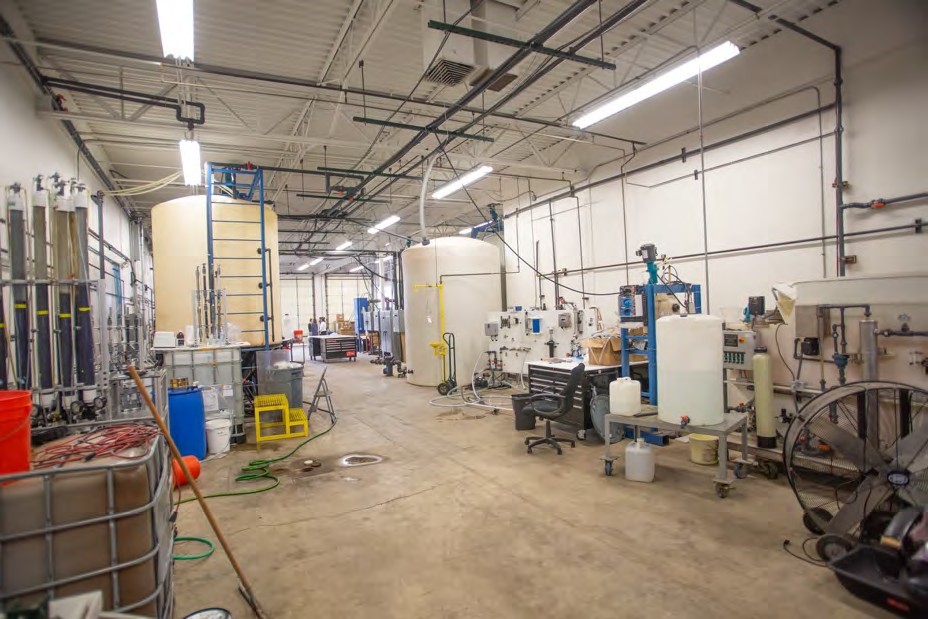New Facility Studies How to Reduce and Treat Energy-Production Wastewater
Outcome/Accomplishment
Engineers launched a large-scale research facility in Denver to study how to better sustain waterresources in energy production. The testbed was established with support from the Engineering Research Center (ERC) for Re-Inventing the Nation's Urban Water Infrastructure (ReNUWIt), a National Science Foundation (NSF)-funded center based at Stanford University.
Impact/Benefits
The new facility will enable research into innovative water and wastewater treatment technologies for the energy industry, which increasingly relies on water to help extract oil and gas. Called the Center for a Sustainable WE2ST (Water-Energy Education, Science and Technology), the facility aims to become the nation's "go-to" institution for research, education, and outreach associatedwith the sustainabilityofwaterresources and energy productioninarid lands.
Explanation/Background
Every drop of water remains precious in dry states like Colorado, Texas, and California—home to much of U.S. energy production. Companies increasingly use water-intense methods of extracting oil and gas, particularly in hydraulic fracturing. They then dispose of the water through evaporation or by injecting it underground. The WE2ST research facility is investigating how the extraction process might use less water, how wastewater might be reclaimed, and how the public would be willing to embrace the use of the reclaimed water. The facility is administered by the Colorado School of Mines (CSM), a member of ReNUWIt, with equipment donated by NGL Energy Partners and Newmont Mining; a $1.5 million grant from the Zoma Foundation (Walton Family Foundation); and added funding from ConocoPhillips and CSM.
Location
Stanford, Californiawebsite
Start Year
Energy and Sustainability
Energy, Sustainability, and Infrastructure
Lead Institution
Core Partners
Fact Sheet
Outcome/Accomplishment
Engineers launched a large-scale research facility in Denver to study how to better sustain waterresources in energy production. The testbed was established with support from the Engineering Research Center (ERC) for Re-Inventing the Nation's Urban Water Infrastructure (ReNUWIt), a National Science Foundation (NSF)-funded center based at Stanford University.
Location
Stanford, Californiawebsite
Start Year
Energy and Sustainability
Energy, Sustainability, and Infrastructure
Lead Institution
Core Partners
Fact Sheet
Impact/benefits
The new facility will enable research into innovative water and wastewater treatment technologies for the energy industry, which increasingly relies on water to help extract oil and gas. Called the Center for a Sustainable WE2ST (Water-Energy Education, Science and Technology), the facility aims to become the nation's "go-to" institution for research, education, and outreach associatedwith the sustainabilityofwaterresources and energy productioninarid lands.
Explanation/Background
Every drop of water remains precious in dry states like Colorado, Texas, and California—home to much of U.S. energy production. Companies increasingly use water-intense methods of extracting oil and gas, particularly in hydraulic fracturing. They then dispose of the water through evaporation or by injecting it underground. The WE2ST research facility is investigating how the extraction process might use less water, how wastewater might be reclaimed, and how the public would be willing to embrace the use of the reclaimed water. The facility is administered by the Colorado School of Mines (CSM), a member of ReNUWIt, with equipment donated by NGL Energy Partners and Newmont Mining; a $1.5 million grant from the Zoma Foundation (Walton Family Foundation); and added funding from ConocoPhillips and CSM.

